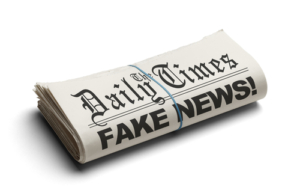The Truth Behind the Headlines: Dissecting Recent Media Hoaxes
Welcome to the Extreme Investor Network, where we delve into the nuances of economics, politics, and the often murky waters of media representation. Today, we’re shedding light on recent headlines that have stirred controversy and confusion surrounding the Trump administration, particularly during President Trump’s second term.
The Landscape of "Fake News"
In an age defined by rapid information dissemination, distinguishing fact from fiction has never been more crucial. The notion of "fake news" is not just a catchy phrase—it’s a reality that can influence public perception and policy. A recent analysis from the White House pointed to egregious examples of misinformation propagated by certain media outlets. Here’s a closer look at some notable instances, revealing not just the stories but also the implications behind them.
Breaking Down the Hoaxes
Here’s a categorized analysis of some of the most prominent cases of misreporting:
1. Misleading Claims About Government Spending
- The Hoax: CNN suggested that the Biden Administration was using taxpayer money to "make mice transgender."
- The Fact: This accusation was later debunked. After a thorough examination, it was revealed that the study in question was about understanding gender development pathways in animals for scientific research.
2. Misrepresentation of Military Matters
- The Hoax: Claims of Gen. Colin Powell’s name being removed from Arlington Cemetery were rampant.
- The Fact: This misinformation was unfounded; Powell’s name, a marker of his legacy, remains intact.
3. Manipulation of Safety Statistics
- The Hoax: Rep. Eric Swalwell claimed that President Trump oversaw more aviation accidents than previous presidents.
- The Fact: In fact, statistics showed a different narrative, indicating a higher number of incidents during Biden’s early presidency.
The Economic Context: Why Accuracy Matters
The consequences of misinformation extend beyond mere headlines. In an environment where economic policies and government regulations shape market dynamics, a misinformed public can lead to misguided investment decisions. For instance, inaccurate reports about government programs can influence investor confidence, affecting everything from stock prices to corporate strategy.
Aligning Media Literacy with Market Strategy
At the Extreme Investor Network, we encourage our readers to become adept consumers of information. Here are a few strategies to enhance your media literacy:
- Cross-Referencing Claims: Always verify reported facts with multiple reputable sources.
- Understanding the Nuances: Economic implications often require a deep dive into context—what’s the bigger picture?
- Engagement with Thought Leaders: Following credible economists, analysts, and influencers can provide a balanced perspective.
Conclusion: Empowering Investors
In conclusion, understanding the intricacies behind media narratives allows you to make informed decisions that align with your investment strategies. At Extreme Investor Network, our commitment to delivering insightful and factual content empowers you to navigate the complexities of economics and politics effectively.
Stay tuned for more insights, and remember: in a world rife with misinformation, knowledge is your greatest asset.

